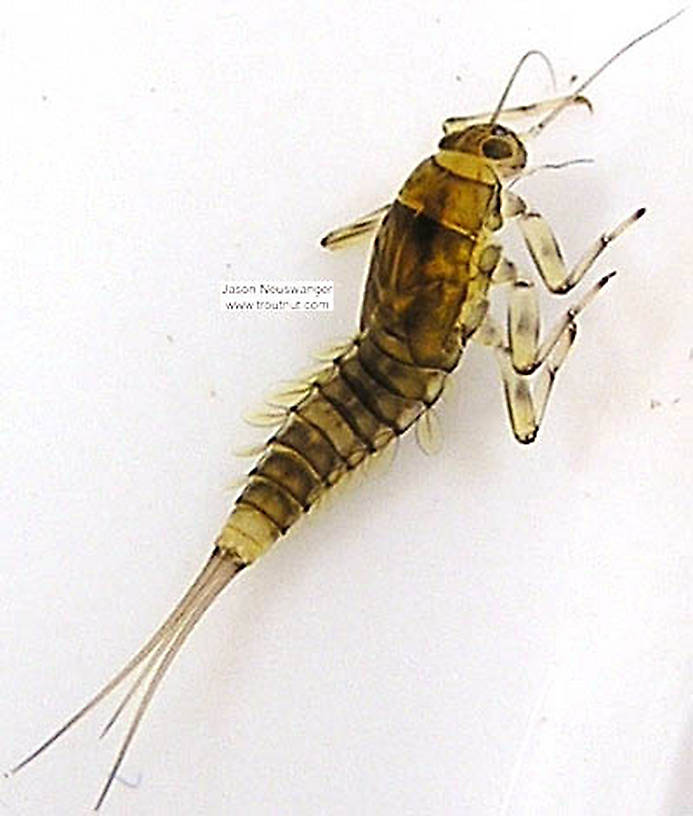
Blue-winged Olives
Baetis
Tiny Baetis mayflies are perhaps the most commonly encountered and imitated by anglers on all American trout streams due to their great abundance, widespread distribution, and trout-friendly emergence habits.
Featured on the forum

This one seems to tentatively key to Holocentropus, although I can't make out the anal spines in Couplet 7 of the Key to Genera of Polycentropodidae Larvae nor the dark bands in Couplet 4 of the Key to Genera of Polycentropodidae Larvae, making me wonder if I went wrong somewhere in keying it out. I don't see where that could have happened, though. It might also be that it's a very immature larva and doesn't possess all the identifying characteristics in the key yet. If Holocentropus is correct, then Holocentropus flavus and Holocentropus interruptus are the two likely possibilities based on range, but I was not able to find a description of their larvae.

Troutnut is a project started in 2003 by salmonid ecologist Jason "Troutnut" Neuswanger to help anglers and
fly tyers unabashedly embrace the entomological side of the sport. Learn more about Troutnut or
support the project for an enhanced experience here.
This is a small tributary of the East Fork of the Iron River in Bayfield County, Wisconsin. I visited it once and collected some bugs at road below a (former?) fish hatchery, but it looked too small to fish comfortably and I didn't try to catch anything.
Closeup insects by Troutnut from Schacte Creek in Wisconsin

This Baetis nymph is quite a bit larger than any of the others I found in winter 2004. Abdomen segment 5 is only slightly pale while 9 and 10 are quite pale. The tail is banded at the tip. Its body measures about 9mm long. It's much larger than the other Baetis specimens I collected, and it has quite well-developed wingpads.
It's most likely a mature nymph from a very early-hatching brood. It comes from the headwaters of a very small, very spring-fed Lake Superior tributary, which wasn't at all frozen despite very frigid temperatures and 3 feet of snow on the ground.
It's most likely a mature nymph from a very early-hatching brood. It comes from the headwaters of a very small, very spring-fed Lake Superior tributary, which wasn't at all frozen despite very frigid temperatures and 3 feet of snow on the ground.

